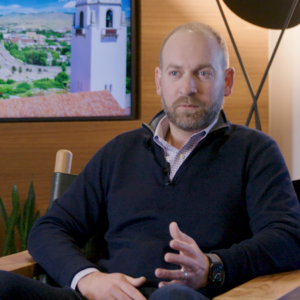Part one in a two-part series
Alternative investments like private equity and hedge funds have long been the near-exclusive purview of ultrarich people and large institutions. Over the past two decades, massive inflows — particularly from big institutional allocators — have powered enormous growth in the sector.
Since 2000, private equity, private credit, and hedge funds have surged from just a trillion dollars combined to nearly $13 trillion, compounding assets at roughly 11% per annum. And by 2032, Preqin forecasts that alternative investments could hit $30 trillion in total.
Over time, pensions have increased their allocations to alternatives considerably, accounting for much of this asset growth. According to data from Pew Charitable Trusts, in 2006 pensions had 11% invested in alternatives on average versus 89% of the portfolio in traditional assets like stocks and bonds. By 2016, this average allocation had increased to 26% in private equity and hedge funds.
It’s hard to really consider them “alternative” considering how nearly ubiquitous they’ve become. However, given the large allocations already in place at institutions, it’s unlikely the next decade will see so-called alternatives grow at anything close to the same rate from these investors. This second phase of growth will come from other channels.
The Unattainable?
At the same time, retail investors have been clamoring for a piece of the action. Although stocks and bonds have performed well since the Great Financial Crisis of 2008, hedge funds and private equity still have the allure of the unattainable. People always seem to want what they can’t have. These private partnerships have remained exempt from some of the more onerous requirements of the 1940 Investment Company Act by accepting only accredited investors — those above a certain income and net worth. This structural flexibility afforded to limit such vehicles to only sophisticated investors is what ostensibly allows private partnerships to generate excess returns, which is a trade-off the managers have been happy to make.
Liquid Alts
But if Wall Street can be relied on for anything, it’s packaging financial products to meet strong investor demand. So-called “liquid alternatives” were one of the investment industry’s early attempts at fulfilling latent retail demand for private equity and hedge funds. These products attempt to mimic their institutional brethren, such as merger-arbitrage funds, trend-following commodity strategies, and levered small-capitalization equities. But unlike private partnerships, firms offer liquid alternatives via registered vehicles like mutual funds, closed-end funds, and exchange-traded funds, providing at least daily liquidity at much lower costs. Although 1-2% management fees (with no profit sharing) are common, liquid alternatives can sometimes be found for just 0.5%.
Interest in these strategies has skyrocketed. Googling “liquid alternatives” yields 256 million results in half a second. Assets in these vehicles have also risen sharply, growing from just under $14 billion in 2003 to nearly $250 billion at the end of 2023 — a growth rate of 17% per year — according to data from financial research firm Morningstar. But investment returns from these products, constrained as those products are by the regulatory requirements of their structures, have largely disappointed. Liquid alts typically underperform hedge fund and private equity indexes by a significant net basis despite their lower fees.
Asset flows into these products have stalled and even reversed, as some financial news outlets have shown some outflows in liquid alts from retail investors. Regardless, it appeared for some time that true access to the desired underlying return streams for non-accredited investors would remain elusive.
But Wall Street does what it does best – adapt, innovate, and grow. Changes to regulations around private placements by the Securities and Exchange Commission have made limited partnerships more accessible to individual investors. And at the same time, new technology platforms and fund structures have resulted in massive asset growth through retail channels.
True Private Investments
Liquid alts may have stalled, but sales of true private alternative partnerships through investment advisers have more than doubled the last few years, largely from non-traded real estate investment trusts, interval funds, and private direct-lending vehicles like business development companies. It is no wonder that investment firms have been keen to peddle their wares to the individual investor market. Retail assets under management hit roughly $35 trillion in 2023, matching institutional assets in the industry but growing nearly twice as fast.
Imagine the size of the alternatives industry a decade from now if the average mom-and-pop investors’ allocation approaches that of the pension community, let alone the typical alts-heavy ultrahigh-net-worth or endowment and foundation portfolios. Preqin’s call for $30 trillion may well prove conservative.
Such growth would likely come at a cost. Hedge funds and private equity returns have diminished to varying degrees with the influx of institutional capital over the past two decades. Likewise, another doubling of assets could seriously erode whatever excess return opportunity still exists, negating the whole reason for the allocation. (The asset managers will still be fine, of course!)
Want to learn more? Check out Part 2: Rise of “Retail Alts”
If, after reading this article, you are interested in exploring true private investments, contact Caprock.
©2024 Caprock. All rights reserved. The Caprock Group, LLC (“Caprock”) is an SEC Registered Investment Advisor. This communication is not an offer or solicitation with respect to the purchase or sale of any security and is for informational purposes only. Information contained herein has been derived from sources believed to be reliable, but Caprock makes no representations as to its accuracy or completeness. Investment in securities involves the risk of loss. Past performance is no guarantee of future returns. Registration with the SEC does not imply a certain level of skill or training.



